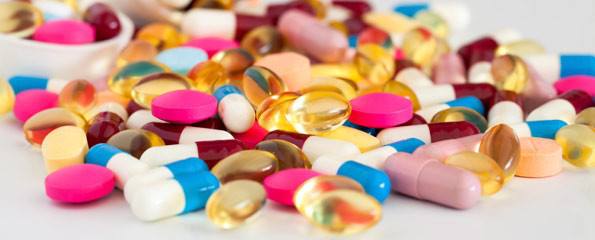Counterfeit Drugs for Erectile Dysfunction (ED)
- What are counterfeit ED drugs?
- Where do people buy counterfeit ED drugs?
- Who buys counterfeit drugs?
- How common are counterfeit ED drugs?
- What’s the difference between counterfeit and genuine ED treatments?
- Why are counterfeit ED drugs so common?
- Why do people buy counterfeit ED drugs?
- Health risks associated with counterfeit ED drugs
- Case study: Hypoglycaemia
- Tips for avoiding counterfeit ED drugs
What are counterfeit ED drugs?
Counterfeit erectile dysfunction (ED) drugs are fraudulent or fake medications marketed and/or sold to treat erectile dysfunction. Like other counterfeit medicines, they may differ from genuine medications in many ways. For example, they may contain a different amount of the active ingredient (the ingredient that functions to relieve ED) compared to the original; they may not contain an active ingredient they claim to; they may contain a different active ingredient; or they may contain no active ingredient at all.
Where do people buy counterfeit ED drugs?
 Counterfeit ED medications are heavily marketed on the internet, often for substantially less than the price of the genuine medicine from a pharmacy. A significant proportion of counterfeit medicines seized in association with internet marketing claim to treat ED.
Counterfeit ED medications are heavily marketed on the internet, often for substantially less than the price of the genuine medicine from a pharmacy. A significant proportion of counterfeit medicines seized in association with internet marketing claim to treat ED.
Two thirds of men who purchase ED medications without a prescription do so over the internet, and up to 90% of all counterfeit ED medications are sold over the internet. Conservative estimates suggest that as many 15,000 websites market medicines to treat erectile dysfunction. These sites receive almost 13 million hits and sell over two million erectile dysfunction tablets each month.
Illegal online ‘pharmacies’ typically provide no physical contact information, often do not provide the name of the pharmacist who supposedly prescribes the medication, and do not require prescriptions to supply prescription-only medicines. A European study reported that 94% of online pharmacy websites surveyed did not name a pharmacist, 90% did not require a prescription and 85% had no physical address.
Who buys counterfeit drugs?
Although limited, evidence suggests that younger men are more likely to purchase medicines online, and thus have a higher risk of purchasing a counterfeit medicine, than their older counterparts. In a European study, 41% of men aged 18–40 years purchased medicines from sources outside the healthcare system (e.g. online), compared to 29% of 41–60 year olds and 15% of those aged ≥ 61 years.
How common are counterfeit ED drugs?
As ED treatments have only recently been approved for legal supply, the prevalence of both legal and counterfeit ED medications has increased exponentially in the 21st century. Millions of counterfeit PDE-5 inhibitors (the main class of drugs used to treat ED) are seized each year, and this class of drug accounts for the majority of counterfeit medicine seizures.
In Europe, an estimated 2.5 million men use counterfeit ED treatments – roughly the same number as obtain ED medications from legal sources. Counterfeit ED treatments are the most commonly-seized type of counterfeit medicine in Europe, and the global increase in the prevalence of counterfeit medicines of any type is partly attributed to the expansion of counterfeit ED treatments.
What’s the difference between counterfeit and genuine ED treatments?
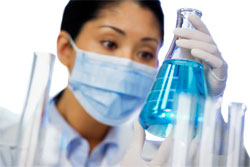 Laboratory analyses of seized ED counterfeits have shown marked variations in composition from their genuine counterparts (that is, differences in the types and amounts of ingredients contained).
Laboratory analyses of seized ED counterfeits have shown marked variations in composition from their genuine counterparts (that is, differences in the types and amounts of ingredients contained).
Doses of the active ingredient contained in counterfeits vary, from not containing any active ingredient, to containing up to twice the dose of the medicine they are supposed to mimic. Only 10% of counterfeit ED drugs tested in the European Union contained an amount of active ingredient that was within 10% of the quantity contained in the original product. However, containing the same amount of the active ingredient does not mean the counterfeit medicine is exactly the same. If the drug has been stored incorrectly, is past the use by date, or uses active ingredients from a different source, the way the drug is absorbed by the body may differ from the original.
Counterfeit ED drugs have also been shown to contain potentially hazardous substances, including commercial paint, talcum powder and printer ink.
Why are counterfeit ED drugs so common?
ED medicines provide a lucrative industry for drug counterfeiters. The medications are expensive, enabling counterfeit manufacturers to make large profits, particularly if they fix manufacturing costs by leaving out the expensive active ingredients contained in the genuine medication. Even counterfeit drugs that do contain the active ingredients provide lucrative profits of up to 2000%. Their sale is estimated to be 10 times more profitable than heroin.
Another reason why ED medications are easy to counterfeit is that ED is a problem that men are often embarrassed to discuss with their doctor. Counterfeit drug manufacturers take advantage of this vulnerability by making their products available without prescription, enabling men to access prescription medicines without seeking medical advice.
Why do people buy counterfeit ED drugs?
There are many reasons why an individual may choose to purchase counterfeit ED drugs.
Circumvention of the healthcare system
People who buy counterfeit ED treatments think they have a medical need for the product. However, many do not visit a doctor to discuss their ED, perhaps because they are too embarrassed. Instead, they self-diagnose their condition. Over 30% of men who purchase counterfeit ED drugs do so without consulting a health professional.
[[calc_ED5small]]
To avoid the need for prescription
Men who have self-diagnosed their ED and need for treatment can easily buy counterfeit drugs because many internet sites sell them without prescription. In Australian pharmacies, ED medications containing PDE-5 inhibitors are available only on prescription.
In addition to being available without a prescription, counterfeit ED drugs sold on the internet are often significantly cheaper than their genuine counterparts. However, the many potential health risks may mean the overall cost is greater.
Some men may order ED drugs online for convenience, even if they have a prescription for the medication. In one French study, 12% of men with prescriptions for PDE-5 inhibitors reported buying their medicine online, which creates a significant risk of purchasing a counterfeit version of the medicine. Another European study reported that 60% of men who purchased prescription-only medicines online believed that they would be able to access the same medicines online as they would get from a real pharmacy or doctor.
Health risks associated with counterfeit ED drugs
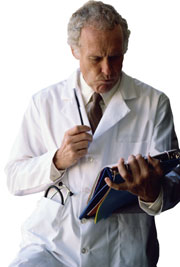 The health risks associated with counterfeit ED drugs depend on the fake product. Counterfeits that contain no active ingredients are unlikely to harm a person’s health (unless they contain a toxic ingredient), but will not treat the condition. Men may then become disillusioned, think their ED cannot be treated, and may be discouraged from seeking professional treatment for their ED in the future.
The health risks associated with counterfeit ED drugs depend on the fake product. Counterfeits that contain no active ingredients are unlikely to harm a person’s health (unless they contain a toxic ingredient), but will not treat the condition. Men may then become disillusioned, think their ED cannot be treated, and may be discouraged from seeking professional treatment for their ED in the future.
Untreated ED is associated with a reduced quality of life and an increased risk of psychological complaints, including stress, depression and low self-esteem. A man’s erectile function affects his partner’s sexual functioning, and is a common cause of relationship breakdown.In addition, ED is a risk factor for many chronic health conditions, some of which are life-threatening. These include cardiovascular disease, diabetes and metabolic syndrome, dyslipidaemia, high blood pressure, and endocrine disorders. Doctors commonly check for these conditions when assessing erectile dysfunction and, if necessary, treat them. Men who do not visit a doctor miss the opportunity to have their overall health checked.
Medicines that contain incorrect doses of the stated active ingredient, or contain active or inactive ingredients without listing them, have the potential to create serious health problems.
Drug overdose, toxicity, contraindication and interactions
There is a potential for drug overdose and drug–drug interaction when there is more active ingredient in a medication than is stated, or when a substitute is used for the active ingredient. Drug–drug interactions are interactions that can occur when an individual takes two medicines at the same time. Sometimes the medicines are incompatible and can interact dangerously, putting the person’s health at risk.
The potential for drug–drug interactions is serious when medications contain unlisted (active or inactive) ingredients with the potential to interact with other drugs. Drug–drug interactions are difficult to assess when the ingredient causing the interaction is unknown.
PDE-5 inhibitors are known to interact with nitrate-containing drugs to cause serious hypotension (low blood pressure). Nitrate-containing drugs are commonly used to treat diabetes, heart conditions, hypertension and hypercholesterolaemia. Using nitrate-containing drugs is contraindicated for PDE-5 inhibitor use, meaning that people who use nitrate-containing medicines cannot use PDE-5 inhibitors.The conditions these medications are used to treat are all common in men who have ED, suggesting that a significant proportion of men using counterfeit ED drugs are at risk of potentially fatal drug interactions.
Unlisted ingredients are potentially toxic. This may be because they are dangerous substances which are always dangerous for human consumption (e.g. commercial-grade paint). Unlisted ingredients which are safe for human consumption in some situations may also be dangerous if they are included in ED medications. For example, medicines used to treat diabetes have been found in counterfeit ED drugs. While these drugs can be taken safely by diabetics, in non-diabetics they can cause fatal hypoglycaemia (very low blood sugar).
If an active ingredient is unlisted or listed as another active ingredient, it may be contraindicated in a different group of people to the listed active ingredient, even if both ingredients are used to treat the same condition. For example, men taking nitrate-containing medications, which contraindicate the use of PDE-5 inhibitors, may choose to use a natural ED treatment instead. While these products claim to be completely natural, analyses of drugs sold on the black market in Australia and Europe show that the counterfeit ‘natural’ ED drugs often contain PDE-5 inhibitors.
Even in cases where the correct active ingredient is contained in the correct quantity, people have limited opportunities to receive information about contraindications when they buy medicine from illegal online sources. Some sites provide prescriptions from cyberdoctors, but it is often unclear whether these ‘doctors’ are computer programs or real people and if they have any medical credentials. Men who should not use PDE-5 inhibitors have been ‘prescribed’ these medications during online consultations.
Circumvention of the healthcare system
There are risks associated with circumventing the healthcare system which occur when prescription-only drugs are purchased on the black market. People with genuine ED may remain untreated because the counterfeit products they purchase do not contain an effective dose of the stated active ingredient. This may discourage patients from seeking professional treatment in the future because they think it will not work for them.
Other health issues which underlie ED may remain undiagnosed when a man uses counterfeit ED treatment. 65% of men who actually have a medically-indicated need for ED treatment, but self-treat with counterfeit medicines instead of consulting their doctors, miss the opportunity to be investigated for conditions that commonly co-occur with and may underpin ED. These include serious conditions such as hypertension and diabetes, which are associated with significant morbidity and mortality and may remain undiagnosed and untreated when men circumvent the healthcare system.
An individual’s perception of their health problems is not necessarily accurate in the medical sense. 35% of men who self-treat with ED counterfeits do not have symptoms that would warrant a medical diagnosis of ED and their treatment is not medically indicated. These men would not receive a prescription for ED medications from their doctor.
Even if a man has medically confirmed ED, he may not be a candidate for medicine if his ED is underpinned by psychological factors, including life stress and depression, rather than biophysical factors. In these cases, psychological interventions rather that pharmacological treatment is indicated. ED may also be underpinned by hormonal abnormalities which require hormone replacement therapy and which PDE-5 inhibitors are not effective in treating.
Regardless of the underlying cause, most men with ED have comorbid emotional symptoms, such as depression or low self-esteem. ED is therefore most effectively treated with a holistic approach that combines pharmacological interventions with psychological (e.g. counselling), hormonal (e.g. testosterone investigations) and other interventions. Men who purchase counterfeit ED drugs therefore do not receive the most effective form of treatment, even if the drugs they purchase are good replicas of the originals (which usually they are not).
Case study: Hypoglycaemia
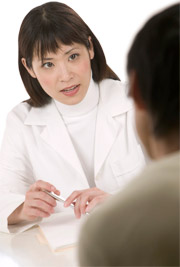 Counterfeit drugs masquerading as tadalafil (a PDE-5 inhibitor used to treat ED) and herbal sexual enhancement products have previously been found to contain an ingredient normally used to treat diabetes. When taken by non-diabetic people, the ingredient produces serious and sometimes fatal reactions.
Counterfeit drugs masquerading as tadalafil (a PDE-5 inhibitor used to treat ED) and herbal sexual enhancement products have previously been found to contain an ingredient normally used to treat diabetes. When taken by non-diabetic people, the ingredient produces serious and sometimes fatal reactions.
In 2007, 150 non-diabetic men were admitted to hospital in Singapore with hypoglycaemia after taking counterfeit ED drugs containing glyburide (also known as glibenclamide), a diabetes drug. Seven of the men went into permanent comas and four died. Traces of glyburide were detected in 85% of the men’s blood or urine samples, and 44 admitted to using illegal sexual enhancement products. Drug samples obtained from these men were analysed and showed doses of 13–100 mg of glyburide per tablet. Many of the tablets also contained sildenafil (another PDE-5 inhibitor and the active ingredient in Viagra).
A similar outbreak of hypoglycaemia occurred in Hong Kong in 2008. It was linked to different brands of illegal products, but raised suspicions that the contaminated drugs were manufactured by the same source.
An Australian man was hospitalised in early 2010 with acute hypoglycaemia. The 54-year-old man denied recreational drug use and excessive alcohol consumption. Further questioning revealed that his condition occurred after consuming a PDE-5 inhibitor. Laboratory analysis confirmed the medicine to be a counterfeit masquerading as tadalafil.This is the first Australian case of severe hypoglycaemia induced by counterfeit ED drugs. It serves to remind the public that Australia is at risk of an outbreak similar in style to that which occurred in Singapore.
Tell your doctor you have taken a counterfeit drug if you have a strange reaction to it. This information will alert your doctor to the possibility that the reaction is caused by the counterfeit drug and help your problem be diagnosed quickly and accurately.
Tips for avoiding counterfeit ED drugs
The following tips can help you to avoid buying counterfeit ED drugs:
- Don’t hesitate to talk to your doctor about sexual problems like ED. They are legitimate health concerns which affect a large proportion of men. Your doctor will not judge you, and will probably be able to treat your condition;
- ED has a range of possible causes, including problems with the blood vessels, emotional problems, and hormone imbalances. PDE-5 inhibitors and most medicines marketed on the internet are designed to address the blood vessel causes of ED, but do not address psychological or hormonal causes;
- Counterfeit ED drugs are dangerous and often contain ingredients which are not listed on the packaging. A number of men have died from taking counterfeit ED drugs;
- Counterfeit drugs often look the same as genuine medicines, and differences can only be detected through laboratory testing. A medicine should not be considered genuine just because it appears the same as the genuine product;
- Do not buy drugs that do not include information about indications for use, manufacturer details, batch and date of manufacture, and expiry date;
- Be wary of internet offers that sound too good to be true – if the medicine costs substantially less over the internet than at a pharmacy, if a prescription is not needed to purchase a prescription-only medicine, or if the website does not provide a physical address or contact details, the products being sold are likely to be fraudulent;
- If you suspect a drug you have purchased is counterfeit, report it to the TGA immediately so further investigations can be conducted. You can contact the TGA through their Report a Problem page, via email (info@tga.gov.au) or toll-free by telephone (1800 020 653);
- Consult with a doctor or other health professional before using the drug for the first time.
More information
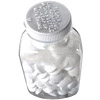 | For more information about drugs, including an introduction to pharmacology, generic versus branded drugs, and the meaning of drug schedules and pregnancy categories, see Drugs. |
 | For more information on erectile dysfunction, types, causes and treatments of erectile dysfunction, and tips for dealing with it, see Erectile Dysfunction. |
References
- Fact sheet: Counterfeit medicines [online]. Geneva: World Health Organization; January 2010 [cited 20 October 2010]. Available from: URL link
- Beware of counterfeit medicines [online]. Clayton, VIC: Andrology Australia; 22 September 2010 [cited 20 October 2010]. Available from: URL link
- Jackson G, Arver S, Banks I, Stecher VJ. Counterfeit phosphodiesterase type 5 inhibitors pose significant safety risks. Int J Clin Pract. 2010;64(4):497-504. [Abstract | Full text]
- Hidden risks of erectile dysfunction “treatments” sold online [online]. Silver Spring, MD: US Food and Drug Administration; 21 February 2009 [cited 20 October 2010]. Available from: URL link
- Counterfeit medical products: TGA News Issue 58 [online]. Woden, ACT: Therapeutic Goods Administration; 30 April 2009 [cited 20 October 2010]. Available from: URL link
- Miller TA. Diagnostic evaluation of erectile dysfunction. Am Fam Physician. 2000;61(1):95-104. [Abstract | Full text]
- Montague DK, Jarow JP, Broderick GA, et al. Clinical Guidelines: Management of erectile dysfunction. Chapter 1: Diagnosis and treatment recommendations [online]. Linthicum, MD: American Urology Association; 2005 [cited 25 February 2010]. Available from: URL link
- Kao SL, Chan CL, Tan B, et al. An unusual outbreak of hypoglycemia. N Engl J Med. 2009;360(7):734-6. [Full text]
- Chaubey SK, Sangla KS, Suthaharan EN, Tan YM. Severe hypoglycaemia associated with ingesting counterfeit medicine. Med J Aust. 2010;192(12):716-7. [Abstract]
- Gaudiano MC, Di Maggio A, Cocchieri E, et al. Medicines informal market in Congo, Burundi and Angola: Counterfeit and sub-standard antimalarials. Malar J. 2007;6:22. [Abstract | Full text]
- McCarthy BW. Relapse prevention strategies and techniques in sex therapy. J Sex Marital Ther. 1993;19(2):142-6. [Abstract]
- Montague DK, Jarow JP, Broderick GA, et al. Clinical Guidelines: Management of erectile dysfunction. Chapter 1: Diagnosis and treatment recommendations [online]. Linthicum, MD: American Urology Association; 2005 [cited 25 February 2010]. Available from: URL link
- Nehra A. Erectile dysfunction and cardiovascular disease: Efficacy and safety of phosphodiesterase type 5 inhibitors in men with both conditions. Mayo Clin Proc. 2009;84(2):139-48. [Abstract | Full text]
- Hackett G, Dean J, Kell P. British Society for Sexual Medicine guidelines on the management of erectile dysfunction [online]. Staffordshire, UK: British Society for Sexual Medicine; 2007. [cited 25 February 2010]. Available from: URL link
- Counterfeit medicines: An unscrupulous business [online]. Frankfurt am Main, Germany: Global Pharma Health Fund (GPHF); 2004 [cited 20 October 2010]. Available from: URL link
- FDA warns consumers about counterfeit drugs from multiple internet sellers [online]. Silver Spring, MD: US Food and Drug Administration; 1 May 2007 [cited 20 October 2010]. Available from URL link
- Counterfeit medical products: TGA News Issue 58 [online]. Woden, ACT: Therapeutic Goods Administration; 30 April 2009 [cited 20 October 2010]. Available from: URL link
- Buying drugs online (internet) [online]. Silver Spring, MD: US Food and Drug Administration Office of Women’s Health; 2007 [cited 20 October 2010]. Available from: URL link
Dates
Tags
Created by:

 Login
Login